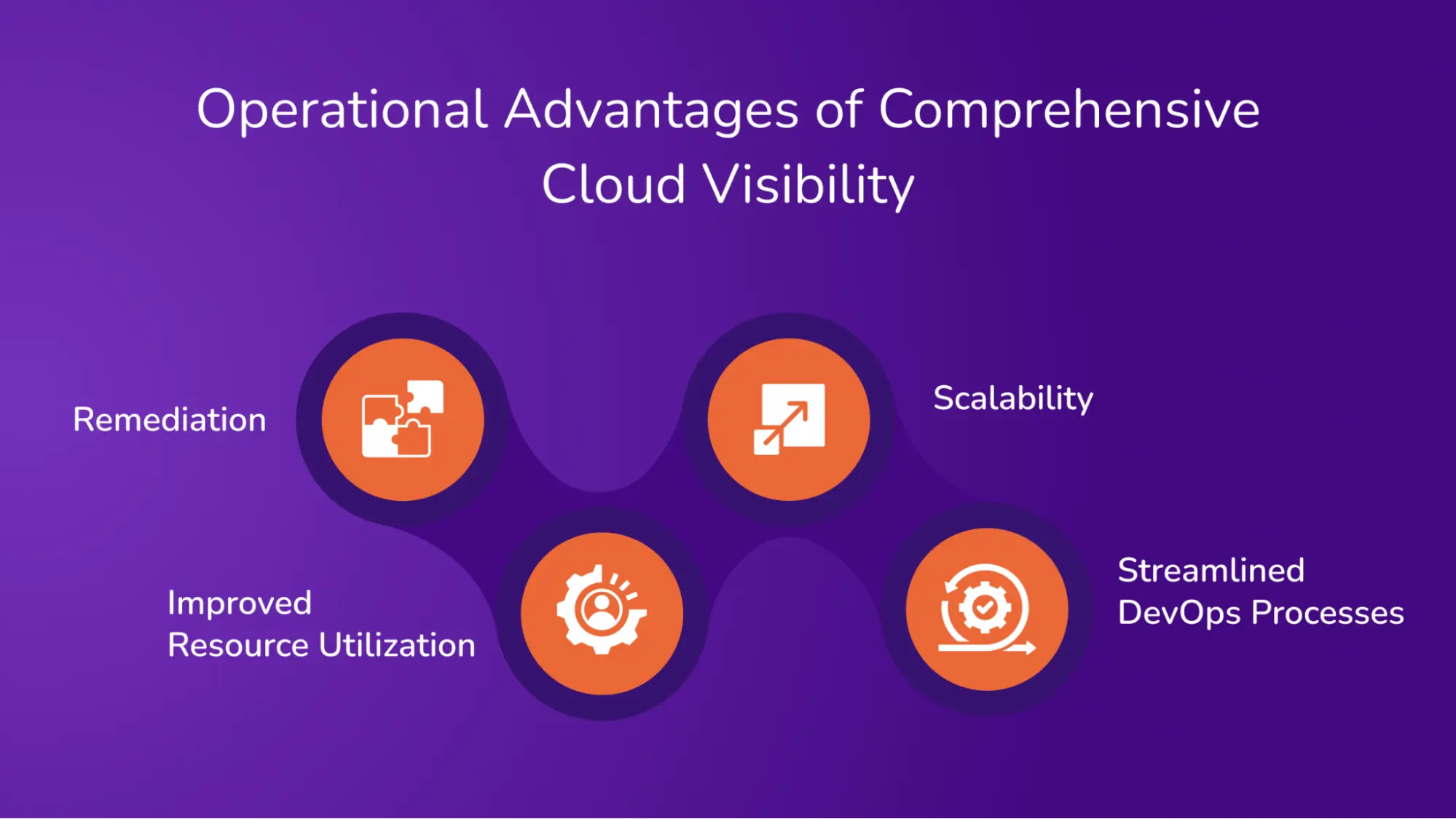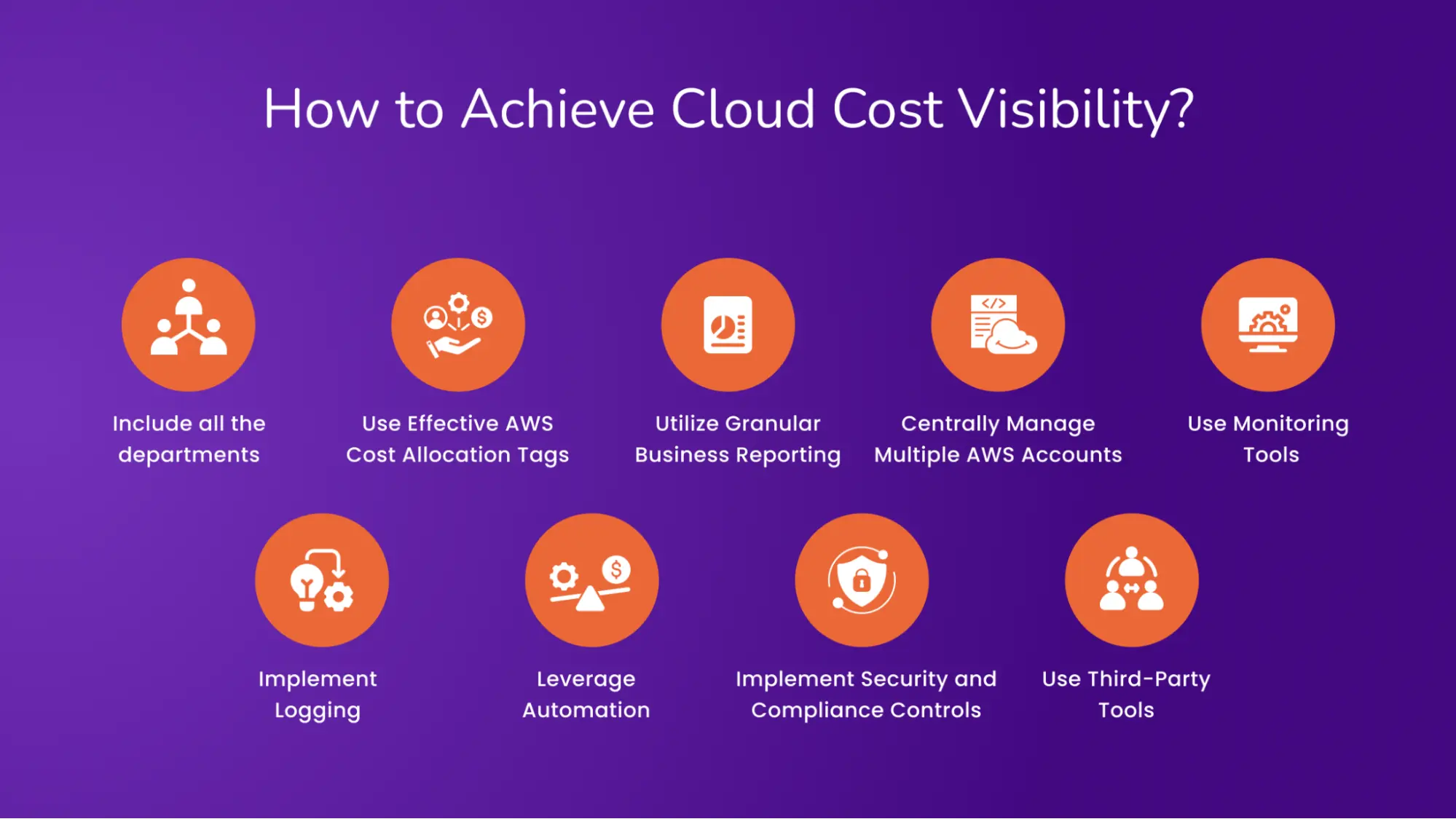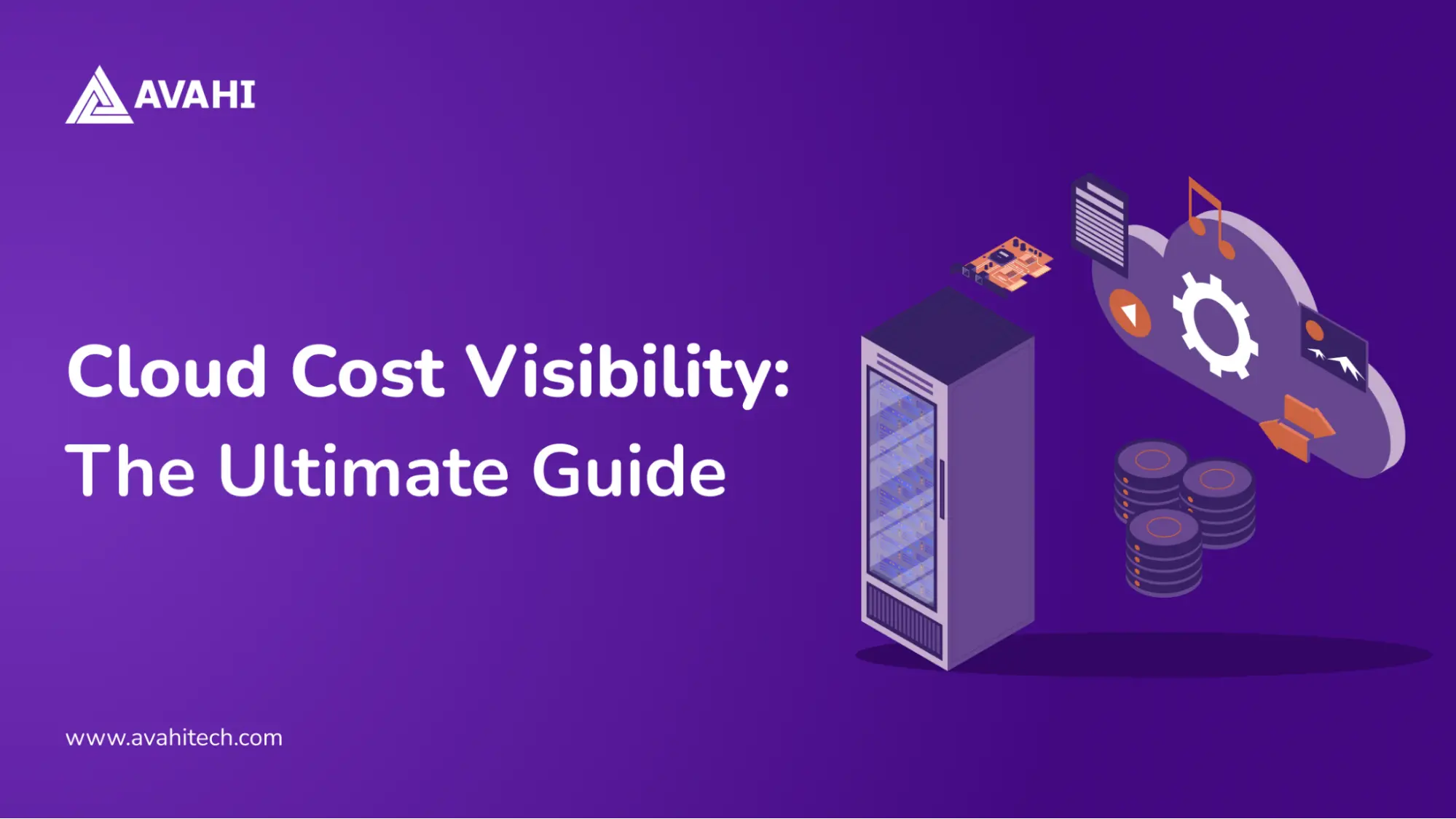As organizations increasingly move towards digital transformation, the adoption of cloud services has become paramount. This shift is underscored by a Gartner forecast, which predicts that by 2025, 85% of organizations will implement a cloud-first strategy. Despite this, a staggering 30% of cloud spending is wasted due to inadequate cost visibility and control.
Comprehensive cloud cost visibility empowers organizations to pinpoint inefficiencies, optimize resource allocation, and drive significant cost savings. Enhanced visibility helps identify and eliminate unused or underutilized resources, negotiate better pricing with cloud providers, and implement effective cost governance policies.
This blog provides essential insights into achieving complete cloud cost visibility, which can lead to substantial savings, enhanced efficiency, and better resource allocation.
What Is Cloud Cost Visibility?
| Cloud cost visibility is analyzing and understanding the costs associated with cloud services, including the costs of applications, resources, and infrastructure. The primary goal is to use cloud spending data to gain insight into how you utilize cloud resources and how much those resources are costing you. |
However, cloud cost visibility is not just about making information available. It’s also about how easy it is to access and extract insights from that information. Organized and well-structured data makes it easier to achieve true visibility.
Components of Cloud Cost Visibility
- Comprehensive View: Cloud visibility refers to an organization’s ability to have a clear and comprehensive view of its cloud infrastructure, usage, and spending. This means tracking the utilization and performance of cloud resources such as virtual machines, storage, databases, and networking components.
- Analyzing Spending Patterns: Understanding how much is spent on each service, project, or department helps identify cost optimization opportunities. By analyzing spending patterns, organizations can pinpoint areas where costs can be reduced, or resources can be better allocated.
- Informed Decision-Making: With detailed insights into cloud spending, organizations can make informed decisions about cloud usage. This includes determining which resources are essential and which can be scaled down or eliminated.
- Cost Optimization: True cloud cost visibility goes beyond seeing your cloud bill. It provides the transparency needed to understand your cloud resources’ return on investment (ROI), enabling organizations to optimize their cloud expenses effectively.
The Challenges of Achieving Cloud Visibility
Achieving comprehensive cloud visibility is crucial for controlling costs, yet it remains a significant challenge for many organizations. Here are the reasons why cloud visibility is so difficult to attain:
- Complex Pricing Structures: Cloud services like AWS have diverse usage metrics and pricing models, complicating the understanding of resource utilization and associated costs.
- Complicated Tagging Systems: Effective tagging is crucial for accurate cost allocation and visibility. However, setting up and maintaining a comprehensive tagging system is complex, and without it, cost management becomes challenging due to untagged resources skewing reports.
- Dynamic and Scalable Resources: The scalability of cloud resources allows for adjustments based on demand, but this flexibility makes cost prediction and management difficult as expenses can fluctuate significantly.
- Lack of Granular Cost Reports: Most cloud providers only offer overarching monthly bills without detailed breakdowns for specific departments or services, hindering precise cost tracking and management.
- Multi-Account and Multi-Region Complexity: Managing costs across multiple cloud accounts and regions complicates visibility, requiring extensive consolidation efforts to achieve a unified cost perspective.
- Skills Gap in Cloud Cost Management: The complexity of cloud billing data and the need for effective cost optimization strategies demand specialized FinOps expertise, which many organizations lack. This skills gap can impede the ability to manage and optimize cloud spending effectively.
Enhancing Financial Efficiency with Cloud Cost Visibility

Cloud cost visibility is essential for managing and optimizing your cloud spending. It provides real-time insights into how your resources are used and where money is spent. Here are some of the important reasons why cloud cost visibility is essential :
- Cost Control and Optimization: Visiting cloud costs allows you to identify idle resources and underutilized services. This knowledge enables you to eliminate waste and implement cost-saving measures, reducing unnecessary expenses.
- Improved Budgeting and Forecasting: Clear cost insights help create accurate budgets and forecast future spending. With detailed visibility, you can plan for growth and avoid unexpected costs, ensuring financial stability.
- Informed Decision-Making: Visibility into cloud spending helps you compare costs across different services and providers. This allows for data-driven decisions about resource allocation and pricing models, ensuring you get the best value for your money.
- Enhanced Accountability: When teams can see the cost implications of their cloud usage, they are more likely to make responsible choices. This fosters a culture of accountability, leading to more efficient resource use and cost savings.
- Identifying Underutilized Resources: Monitoring cloud usage can help you spot underutilized resources and either optimize or decommission them. This prevents paying for resources you don’t need, reducing overall costs.
- Tracking Resource Consumption: Tracking resource consumption over time allows for better usage forecasting and budgeting. This proactive approach helps avoid unexpected cost spikes and keeps spending aligned with budgetary plans.
Operational Advantages of Comprehensive Cloud Visibility

Cloud and multi-cloud visibility allow businesses to streamline and optimize their cloud operations. Here are some key benefits and examples of how businesses can use cloud visibility.
1. Remediation
Cloud visibility enables consistent fine-tuning and remediation for security, compliance, and efficiency. By providing unified real-time data across a cloud network, businesses can quickly identify and address performance issues, security threats, configuration errors, or regulatory oversights.
For example, a company using comprehensive cloud visibility tools was able to identify and fix misconfigurations causing security vulnerabilities, significantly reducing its risk profile and improving operational efficiency.
2. Scalability
Complete cloud visibility is crucial for efficiently scaling resources up or down across a network. Consistent monitoring and data logging reveal usage patterns, highlighting opportunities for optimizing resources.
3. Improved Resource Utilization
Cloud visibility allows businesses to monitor resource usage closely, ensuring that resources are utilized efficiently. Companies can avoid over-provisioning and under-utilization by understanding usage patterns, leading to more efficient resource management.
For example, a media streaming company used cloud visibility tools to optimize its server usage, reducing unnecessary costs while maintaining high performance during peak times.
4. Streamlined DevOps Processes
Cloud visibility tools integrate well with DevOps practices, providing teams with real-time insights into the performance and usage of development and production environments. This integration leads to more efficient development cycles, quicker issue resolution, and better collaboration between development and operations teams.
A tech startup, for example, leveraged cloud visibility to streamline its CI/CD pipeline, resulting in faster deployment times and improved software quality.
How to Achieve Cloud Cost Visibility?

Achieving cloud cost visibility requires thoroughly understanding your cloud infrastructure, applications, and data. Here are steps to help you gain comprehensive visibility into your cloud costs:
- Include all the departments
Involving all stakeholders is crucial for complete visibility into your organization’s overall cloud costs.
- Assemble a FinOps team that includes development, operations, engineering, and finance members.
- This team should ensure everyone understands the connection between cloud infrastructure, costs, and business goals.
- The structure of the FinOps team should reflect how your business operates to ensure alignment and effective cost management.
- Use Effective AWS Cost Allocation Tags
Cost allocation is essential for building a solid foundation for cloud cost visibility. Use cost allocation tags to categorize AWS infrastructure. Tags in AWS are metadata labels assigned to cloud resources with a key and value. These tags help identify the purpose and owner of each resource, providing a clear structure for cost tracking and reporting.
- Utilize Granular Business Reporting
Granular reporting is critical for achieving detailed cloud cost visibility. It helps identify which resources consume the most cloud usage and incur the highest costs. With granular reporting, monitoring the usage of Reserved Instances and underutilized resources is also possible. Additionally, it enables the analysis of cost trends over time, allowing you to detect abnormal spikes in usage before they become significant issues.
- Centrally Manage Multiple AWS Accounts
Managing multiple AWS accounts through a centralized dashboard becomes essential as your organization grows. It is impractical to manage each AWS account manually from different dashboards. A centralized management system unifies cloud costs and provides a comprehensive view of all resources, ensuring effective cost visibility.
- Use Monitoring Tools
Monitoring tools provide a centralized view of cloud resources and their performance. They track and report metrics like CPU utilization, network traffic, and disk usage. These tools help optimize resource usage, detect and resolve issues, and plan capacity effectively. Some popular monitoring tools include:
- AWS CloudWatch: Provides monitoring for AWS cloud resources and applications.
- Azure Monitor: Comprehensive monitoring for Azure services and on-premises resources.
- Google Cloud Monitoring: Offers visibility into cloud-powered applications performance, uptime, and overall health. Google Cloud Monitoring
- Datadog: A monitoring and analytics platform for cloud-scale applications.
- New Relic: Provides real-time monitoring and analytics for your entire stack.
- Implement Logging
Logging tools capture and store data on events and activities within the cloud environment. This data is invaluable for troubleshooting problems, investigating security incidents, and providing audit trails for compliance purposes. Effective logging ensures you have a detailed record of all cloud activities.
- Leverage Automation
Automation streamlines cloud management tasks and reduces errors, maintaining a consistent view of the cloud environment. Automated processes enforce compliance policies, such as resource tagging and access controls. However, to avoid reducing visibility, standardize the automation tools used across the organization.
- Implement Security and Compliance Controls
Security and compliance controls, such as identity and access management (IAM) and encryption, are essential for maintaining the cloud environment’s security and integrity. Implement these controls to ensure that only authorized users and applications have access to cloud resources.
- Use Third-Party Tools
Third-party tools offer additional capabilities and integrations with public cloud providers. These tools provide:
- Deeper insights into cloud performance and usage.
- Addressing specific challenges like cost optimization.
- Compliance reporting.
- Advanced analytics.
They enhance your ability to manage and optimize cloud costs effectively.
By following these steps, organizations can achieve comprehensive cloud cost visibility, enabling better cost control, improved budgeting, informed decision-making, and enhanced accountability.
Optimize Your Cloud Costs with Avahi!

Transform how you manage and optimize cloud costs with Avahi’s AWS Cloud Cost Optimization Service. Our team of experts helps you reduce the cost of running your cloud infrastructure while enhancing performance and resource utilization.
With our comprehensive approach, including right-sizing, increased elasticity, and smart pricing models, we’re committed to maximizing your cloud ROI. Discover how our tailored solutions can transform your AWS experience and propel your business forward.
Ready to significantly reduce your AWS costs and optimize your cloud infrastructure?



